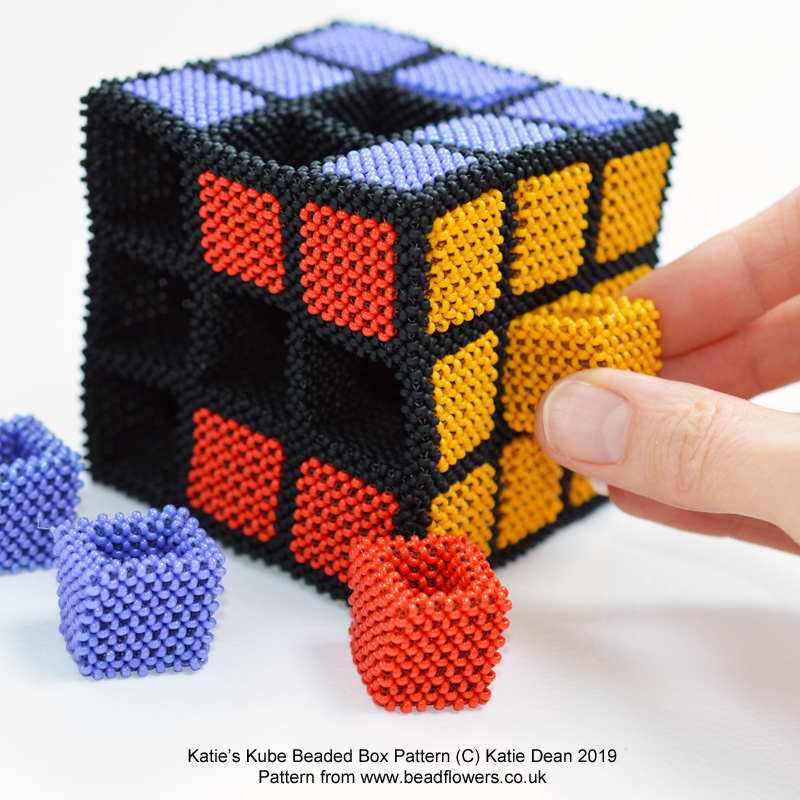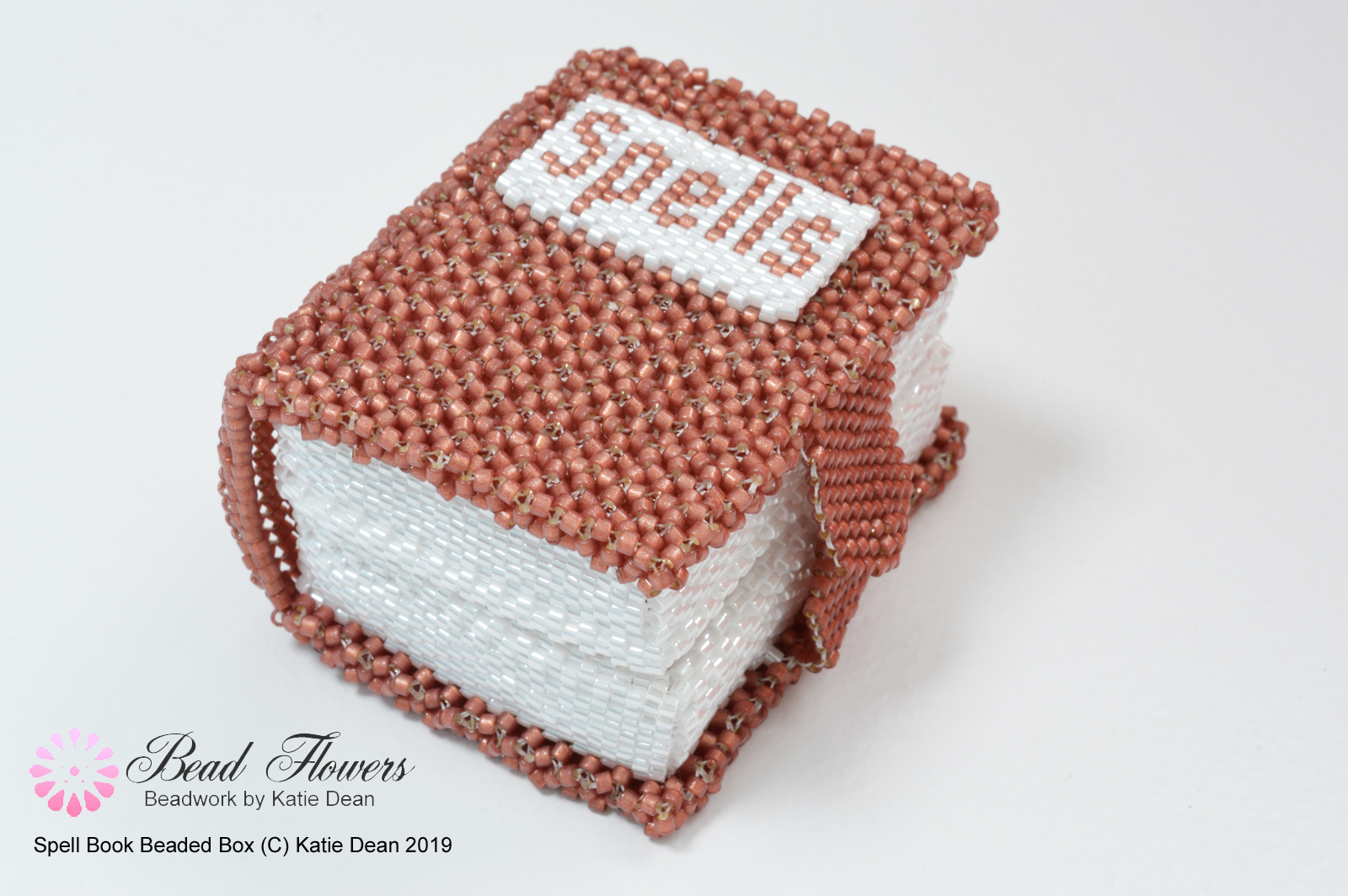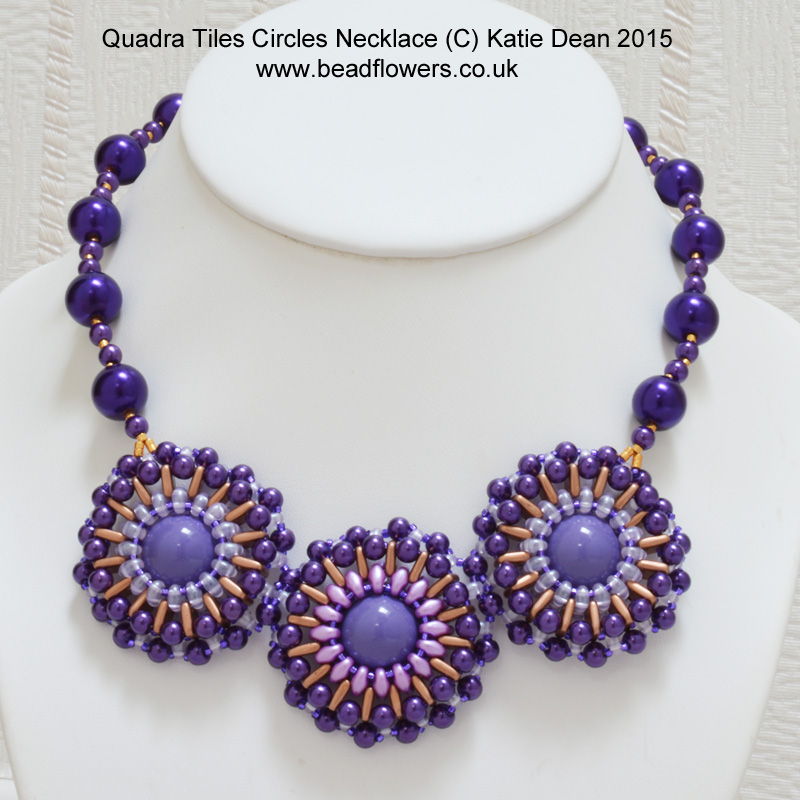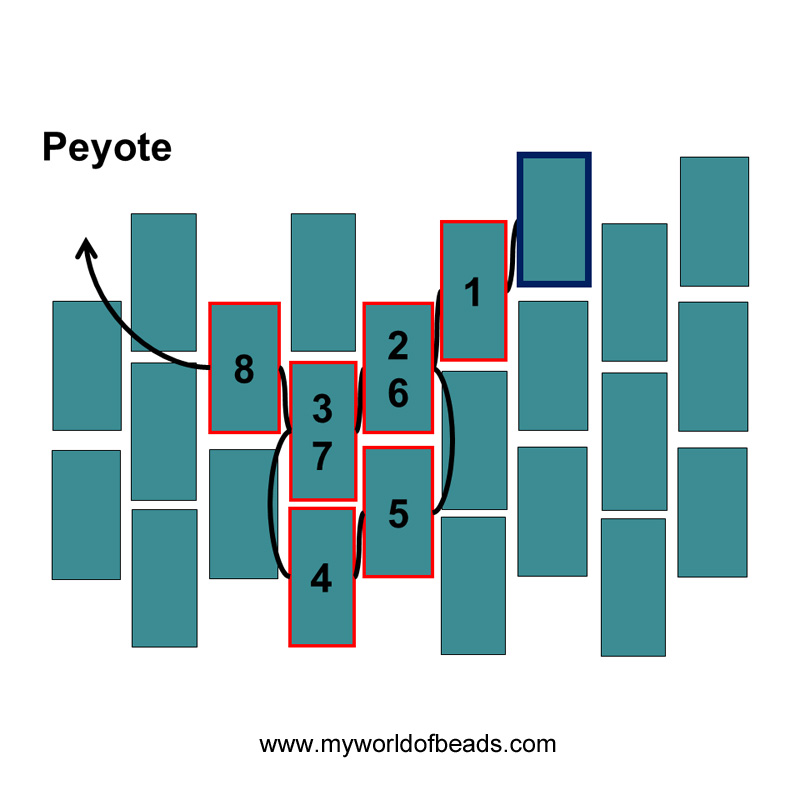Advanced Beading: what is it?
I think most people have an idea about what they think advanced beading entails. So, according to that idea, they may or may not consider themselves to be advanced beaders. But are you judging things correctly? Do you really understand what an advanced beading project is? Are you really an advanced beader or not? Now, I’m not arguing I have the perfect answer here, but I would like to share my thoughts.
What is advanced beading?
I think most people think of this in terms of techniques or experience. So, you might be thinking that this covers projects that use more complicated techniques. For some, Cubic Right Angle Weave may count as a complicated technique. For others, it could be dimensional Peyote stitch.
The thing is, I would argue that you cannot ‘standardise’ how advanced techniques are. What do I mean by that?
Well, I’ve taught a lot of people over the years. I’ve seen different people cope differently with the exact same technique. Take CRAW as an obvious example… I’ve witnessed people who have been beading for years, are terribly experienced, but just can’t get their heads around it. Then, I’ve seen beginners pick it up in no time because it just ‘makes sense’ to them.
So, I think it’s difficult – and maybe not even sensible – to label techniques, or variations of techniques, as beginner, advanced, etc.

Click here to try out this advanced beading project
Then, we come to the issue of experience.
Some people might argue that you are an ‘advanced beader’ after you have had a certain amount of experience. That could be termed as time spent beading, or as the type of projects you’ve done in the past.
The trouble is, this sets up people’s expectations. They start to think, ‘oh, I’ve been beading for 20 years, so I must be advanced.’ Or, at the other end, ‘I’ve only been beading for six months, so I couldn’t possibly try an ‘advanced beading’ project.’
The truth is, beaders with loads of experience are always going to find things that stump them. These may not be things that are terribly difficult in the abstract, but they are new. Conversely, a relatively new beader may just find they ‘get’ a tricky pattern and can sail through it.

Click here to try the cupcake beaded box
How can you tell if you’ll be able to do an advanced project?
So, none of that is very helpful. I’ve basically just told you that the amount of time you’ve spent beading has no bearing on whether or not you can cope with advanced projects. I’ve also just said that the technique(s) you will be using aren’t important either.
So, what is?
Well, to my mind, becoming an advanced beader is all about problem solving.
If you are faced with something new and you’re struggling to understand it, how do you react? If you panic, throw your beads down in horror and then write a rude email to the designer, you’re not – and never will become – an advanced beader.
On the other hand, if you slow things down and try to work out a way of overcoming the problem, then you are demonstrating advanced skills.
Now, that might be as simple as taking a break and returning with fresh eyes. Or, possibly you realise you need to go away and find out more about the basics of a technique.
You might do a better job of using ALL the resources in front of you. I see a lot of people focus all their energy into just the textual explanation, or just the diagram. In reality, you need both. You should also be stepping back and looking at the photos of the finished project and thinking, how might it be logical to achieve that effect? All of that will help you put some perspective on tricky steps.
It is entirely possible that you could end up doing something a little differently from the original designer, but if the end result looks the same, it doesn’t matter.

Click here to try the spell book beaded box pattern
My perspective
So, when I’m writing up tutorials, I label them according to how much problem-solving is likely to be required. If I am writing up something that uses a single, repetitive technique, or really simple thread paths, I would consider that beginner or improver level. I would include a LOT of detail (as in diagram/photograph more to show all the little nuances).
For an intermediate project, I would assume the beader is familiar with the basic techniques, I would be using them in straightforward ways, and I would give a really good explanation.
When it comes to an advanced project, I still do all of the above, but I am aware that I will be asking people to do more unusual things. So, I expect them to be willing to learn something new, to be able to problem solve.
Does that mean that some people will never reach advanced level? Very possibly.
But it also means that if you’re good at problem-solving, following instructions and willing to make mistakes, you can be working on advanced projects within a few weeks or months of picking up your first bead.
The other thing to bear in mind is that beading covers a VAST range of techniques. So, just because you have mastered one, doesn’t mean you can do everything. Each time you try a new technique, you will be approaching it as a beginner. Although you will have the advantage that you’re used to reading patterns and using beads.
So, really, your attitude is everything. Happily, that opens up a whole world of possibilities… If you have patience and tenacity, you can climb any mountain… Or, make any advanced beading project!











Wow! You have really hit the nail on the head with this one. What I like most about ANY craft is “figuring it out”. That desire had me doing complicated bead weaving within 6 months after starting to weave. There is still a lot of value in beading experience, due to the multitude of bead types and sizes out there, and if you’re making jewelry, the need to understand jewelry vocabulary. When I confronted my first beading supply website, I thought, what the heck is a finding, and how is it different from a component! Also, many jewelry patterns end with “add clasp as desired”—a tricky proposition for the beginner. The downside of enjoying the problem-solving side of beading is getting bored with a project before you’ve finished.
I started out quilting many years ago, and the same principle applies. I have friends who have quilted longer than I have, but still need to follow a pattern exactly. For instance, drafting a quilt of a different size than the pattern, is something they don’t want to do.
I’m so glad that resonated!
I absolutely agree about the value of experience – I still vividly remember how confusing all the new terms felt when I started. But it’s nice to know that if you’re the type of person who’s prepared to persevere and learn something new, you can just try out anything that takes your fancy!
I understand what you mean about getting bored before you’ve finished, although I find some beading techniques so relaxing that it’s just nice to indulge in that and not have to think too hard sometimes. A lot of my projects go through a ‘curve’ process…initial excitement, ‘hard work’ to get the bulk done, then excitement again as I see the end approaching and everything taking shape 🙂